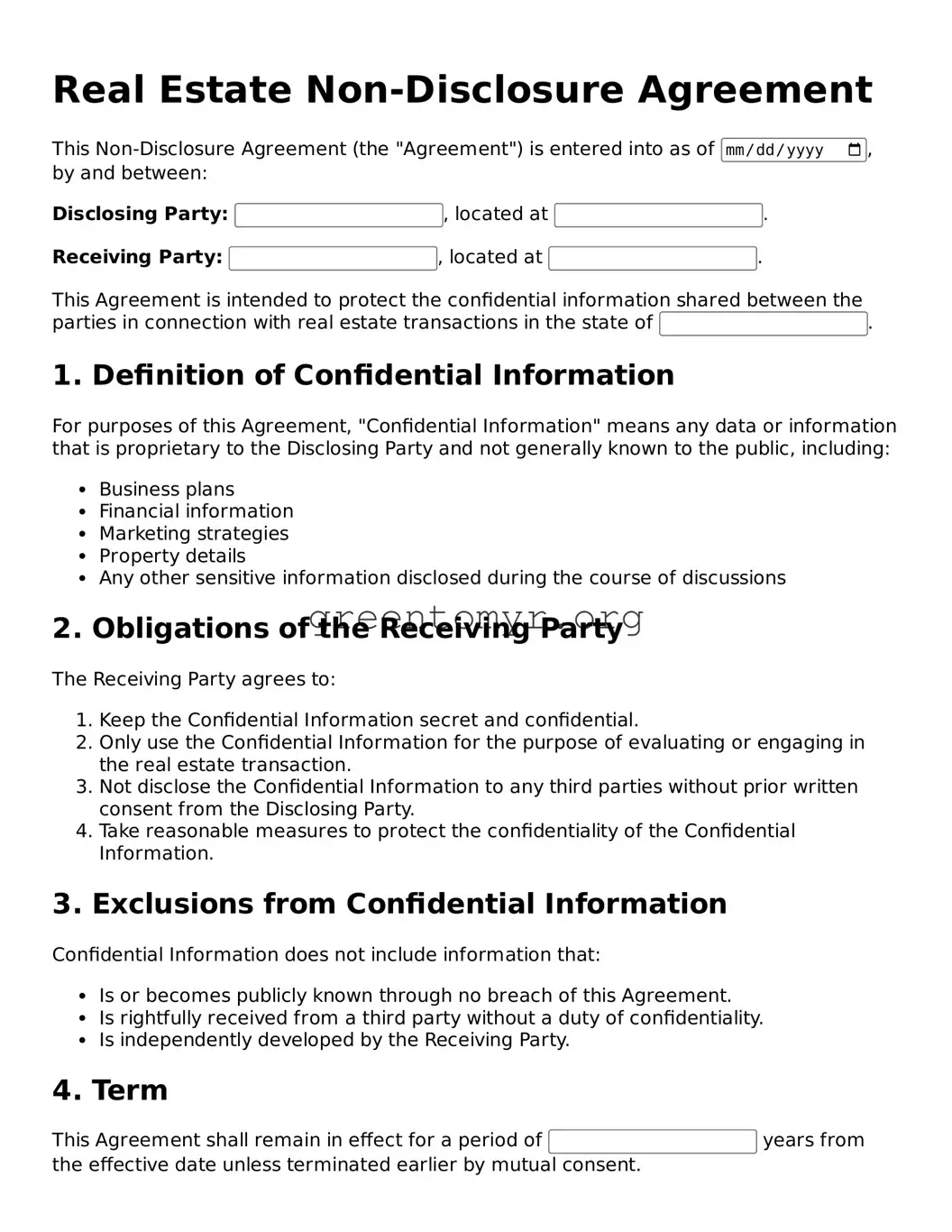Valid Real Estate Non-Disclosure Agreement Form
A Real Estate Non-Disclosure Agreement (NDA) is a legal document that helps protect sensitive information shared during real estate transactions. This form ensures that parties involved keep confidential details private, fostering trust and security in negotiations. To get started, fill out the form by clicking the button below.
